I came up with a custom interpolation method for my problem and I'd like to ask if there are any risks using it. I am not a math or programming expert, that's why I'd like a feedback :)
Story:
I was searching for a good curve-fit method for my data when I came up with an idea to interpolate the data.
I am mixing paints together and making reflectance measurements with a spectrophotometer when the film is dry. I would like to calculate the required proportions of white and colored paints to reach a certain lightness, regardless of any hue shift (e.g. black+white paints gives a bluish grey) or chroma loss (e.g. orange+white gives "pastel" yellowish orange, etc.)
I check if Beer-Lambert law applies, but it does not. Pigment-mixing behaves in a more complicated fashion than dye-dilutions. So I wanted to fit a curve to my data points (the process is explained here: Interpolation for color-mixing
First step was doing a calibration curve, I tested the following ratios of colored VS white paints mixed together:
ratios = 1, 1/2., 1/4., 1/8., 1/16., 1/32., 1/64., 0
This is the plot of my carefully prepared samples, measured with a spectrophotometer, the blue curve represents the full color (ratio = 1), the red curve represents the white paint (ratio = 0), the black curves the mixed samples:
Second step I wanted to guess from this data a function that would compute a spectral curve for any ration between 0 and 1. I did test several curve fitting (fitting an exponential function) and interpolation (quadratic, cubic) methods but the results were of a poor quality.
For example, this is my reflectance data at 380nm for all the color samples:
This is the result of scipy.optimize.curve_fit using the function:
def func(x, a, b, c):
return a * np.exp(-b * x) + c
popt, pcov = curve_fit(func, x, y)
Then I came-up with this idea: the logarithm of the spectral data gives a closer match to a straight line, and the logarithm of the logarithm of the data is almost a straight line, as demonstrated by this code and graph:
import numpy as np
import matplotlib.pyplot as plt
reflectance_at_380nm = 5.319, 13.3875, 24.866, 35.958, 47.1105, 56.2255, 65.232, 83.9295
ratios = 1, 1/2., 1/4., 1/8., 1/16., 1/32., 1/64., 0
linear_approx = np.log(np.log(reflectance_at_380nm))
plt.plot(ratios, linear_approx)
plt.show()
What I did then is to interpolate the linear approximation an then convert the data back to linear, then I got a very nice interpolation of my data, much better than what I got before:
import numpy as np
import matplotlib.pyplot as plt
import scipy.interpolate
reflectance_at_380nm = 5.319, 13.3875, 24.866, 35.958, 47.1105, 56.2255, 65.232, 83.9295
ratios = 1, 1/2., 1/4., 1/8., 1/16., 1/32., 1/64., 0
linear_approx = np.log(np.log(reflectance_at_380nm))
xnew = np.arange(100)/100.
cs = scipy.interpolate.spline(ratios, linear_approx, xnew, order=1)
cs = np.exp(np.exp(cs))
plt.plot(xnew,cs)
plt.plot(x,y,'ro')
plt.show()
So my question is for experts: how good is this interpolation method and what are the risks of using it? Can it lead to wrong results?
Also: can this method be improved or does it already exists and if so how is it called?
Thank you for reading




